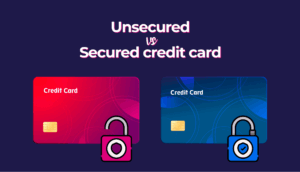In the diverse world of credit cards, the “All in One Credit Card” often refers to a card that attempts to combine multiple desirable features into a single offering, aiming to be a versatile tool for everyday spending, rewards, and perhaps even some travel benefits. While no single card can truly be “all in one” for every individual’s unique financial needs, cards marketed with this ethos typically offer a broad appeal, aiming to simplify financial management by reducing the need for multiple cards. This guide will explore what such a card might entail, its potential benefits, key considerations, and the general application process.
What Defines an “All in One” Credit Card?
The concept of an “All in One” credit card isn’t tied to a specific product name from a single issuer. Instead, it describes a credit card that tries to be a jack-of-all-trades, aiming to cover a wide array of consumer needs. This typically means it combines features from various card categories, such as:
- Cashback Rewards: Earning a percentage back on all or specific categories of spending.
- Travel Benefits: Perks like no foreign transaction fees, travel insurance, or lounge access.
- Low Interest Rates: For those who occasionally carry a balance.
- Balance Transfer Options: To consolidate debt from other cards.
- Fraud Protection and Security Features: Standard but essential.
- No Annual Fee: A common feature for broad appeal, though some premium “all in one” cards might have one for enhanced benefits.
The goal is to provide a single card that can be used reliably for most financial situations, simplifying your wallet and reward strategy.
Potential Key Features and Benefits of an “All in One” Credit Card
Let’s imagine the typical benefits you might find bundled into a card aiming for an “All in One” designation:
1. Flexible Rewards Program:
A true “All in One” card often features a flexible rewards structure. This might include:
- Flat-Rate Cashback: Earning a consistent percentage (e.g., 1.5% – 2%) on all purchases, simplifying reward tracking.
- Tiered Cashback/Points: Higher earning rates on popular spending categories like groceries, dining, or gas, while still offering a decent base rate on everything else.
- Redemption Versatility: The ability to redeem rewards as statement credits, direct deposits, gift cards, or even for travel, offering maximum flexibility.
2. No Annual Fee (Often):
Many cards positioned as “All in One” aim for broad market appeal by offering no annual fee. This ensures that the card’s benefits are accessible without an ongoing cost, making it easier for users to ensure their rewards outweigh any fees. If an annual fee is present, it’s usually justified by significantly enhanced travel or premium lifestyle benefits.
3. No Foreign Transaction Fees:
A crucial feature for any card aiming to be “all in one” for global use. No foreign transaction fees (typically 2-3% of the transaction amount) save you money when making purchases outside your home country, whether you’re traveling or shopping online from international merchants.
4. Introductory APR Offers:
To attract new cardmembers, an “All in One” card might offer introductory 0% APR periods on purchases and/or balance transfers. This can be highly beneficial for financing a large purchase interest-free for a set period or for consolidating high-interest debt, provided you can pay it off before the promotional period ends.
5. Comprehensive Purchase and Travel Protections:
Robust security and protection features are paramount. These could include:
- Extended Warranty Protection: Adding extra warranty coverage to eligible items purchased with the card.
- Purchase Protection: Covering new purchases against damage or theft for a limited time.
- Return Protection: Issuing a refund for eligible items that a store won’t take back.
- Travel Accident Insurance: Coverage for accidental death or dismemberment during eligible travel.
- Trip Cancellation/Interruption Insurance: Reimbursing non-refundable expenses if your trip is canceled or interrupted due to covered reasons.
- Baggage Delay/Lost Luggage Insurance: Providing compensation for delayed or lost bags.
- Rental Car Insurance: Often secondary, but some premium cards might offer primary coverage.
6. Strong Fraud Protection:
Standard across reputable issuers, but essential for an “All in One” card: Zero Liability protection against unauthorized charges, real-time fraud monitoring, and secure online account access.
7. Digital Wallet Compatibility:
Seamless integration with digital wallets like Apple Pay, Google Pay, and Samsung Pay for convenient and secure mobile payments.
8. Strong Mobile App and Online Account Management:
An intuitive mobile app and robust online portal for managing your account, checking balances, tracking rewards, making payments, and accessing customer service.
Important Information to Consider Before Applying
While an “All in One” card sounds ideal, there are critical factors to weigh:
- Credit Score Requirement: Cards with a broad range of benefits typically require a good to excellent credit score (generally FICO 670+). Your credit history, income, and existing debt will be key factors in approval.
- Interest Rates (APR): Beyond any introductory 0% APR period, the ongoing Annual Percentage Rate (APR) for purchases can be variable and is a crucial consideration if you anticipate carrying a balance. Always aim to pay your statement balance in full each month to avoid interest charges.
- Cash Advance Fees: Using your credit card for cash advances usually incurs high fees and immediate interest charges. This feature should be reserved for emergencies.
- Complexity of Rewards: While aiming for simplicity, some “all in one” cards might still have tiered rewards or caps on earning, so it’s essential to understand the specific reward structure.
- Limits of “All in One”: Remember, no single card is truly perfect for everything. A dedicated travel card might offer better lounge access or elite status perks, and a dedicated low-APR card might have a much longer 0% intro period. An “All in One” card aims for broad utility, not always extreme specialization.
How to Apply for an “All in One” Credit Card (Application in English)
The application process for credit cards in general is largely standardized across major issuers. If you’re looking for a card that embodies the “All in One” philosophy, here’s a general guide to the online application process:
1. Research and Choose the Right Card: Since “All in One” isn’t a specific product, your first step is to research various credit cards from different issuers (e.g., Chase, American Express, Capital One, Citi, Discover, etc.) that offer a combination of the benefits you seek (cashback, no foreign transaction fees, travel perks, etc.). Compare their rewards rates, annual fees, introductory offers, and specific benefits. Websites like NerdWallet, The Points Guy, or Bankrate are excellent resources for comparing cards.
2. Check Eligibility (Optional but Recommended): Some card issuers offer a pre-qualification or eligibility check tool on their websites. This allows you to see if you’re likely to be approved without a hard inquiry on your credit report. This is a soft check and doesn’t impact your credit score.
3. Visit the Issuer’s Official Website: Once you’ve identified the specific card you wish to apply for, go directly to the official website of the issuing bank (e.g., chase.com, americanexpress.com). Do not apply through third-party sites unless explicitly redirected from the official issuer’s page.
4. Locate the Card and Start the Application: Find the specific card you’re interested in and click on the “Apply Now” or similar button.
5. Fill in Personal Information: You’ll be prompted to complete a secure online application form with your personal details. This typically includes:
- Full Legal Name (First, Middle, Last)
- Date of Birth
- Social Security Number (SSN) or Individual Taxpayer Identification Number (ITIN)
- Current Residential Address (and previous address if less than 2 years at current)
- Phone Number and Email Address
- Mother’s Maiden Name (for security verification)
- Citizenship Status (e.g., U.S. Citizen, Permanent Resident)
6. Provide Financial and Employment Information: This section is crucial for the issuer to assess your creditworthiness. You’ll need to provide:
- Employment Status (e.g., Employed, Self-Employed, Retired, Student)
- Employer Name (if applicable)
- Annual Gross Income (from all verifiable sources)
- Source of Income
- Monthly Housing Payment (rent or mortgage)
- Bank Account Information (for setting up payment methods)
7. Review and Agree to Terms and Conditions: Before submitting, meticulously review all the information you’ve entered for accuracy. Crucially, read the Terms and Conditions and Pricing and Fees disclosure. This document outlines the card’s APR, annual fees, late fees, foreign transaction fees, and all other important details.
8. Submit Your Application: Once you’re satisfied with the information and have agreed to the terms, click the “Submit” button.
9. Await Decision: Many online applications receive an instant decision. However, some applications may go into a pending status, requiring further review by the issuer. If this happens, you might be contacted for additional information, or you can often check your application status online or by phone.
10. Card Delivery and Activation: If approved, the physical card will be mailed to your address, typically within 7-10 business days. For security, your PIN (Personal Identification Number) is usually sent in a separate mailing. Once you receive the card, you’ll need to activate it online or by phone before you can start using it.
Important Tip: Applying for multiple credit cards within a short period can negatively impact your credit score. Only apply for cards you genuinely need and for which you believe you qualify.
Conclusion
An “All in One” credit card aims to be the versatile cornerstone of your financial toolkit, offering a robust blend of rewards, security, and convenience for both everyday spending and travel. While no single card can perfectly fit everyone’s niche needs, these cards are designed for broad appeal, simplifying your wallet and maximizing value without requiring you to juggle multiple accounts. By carefully researching and choosing a card that aligns with your spending habits and financial goals, you can find a powerful “All in One” solution to streamline your finances and unlock valuable benefits.







